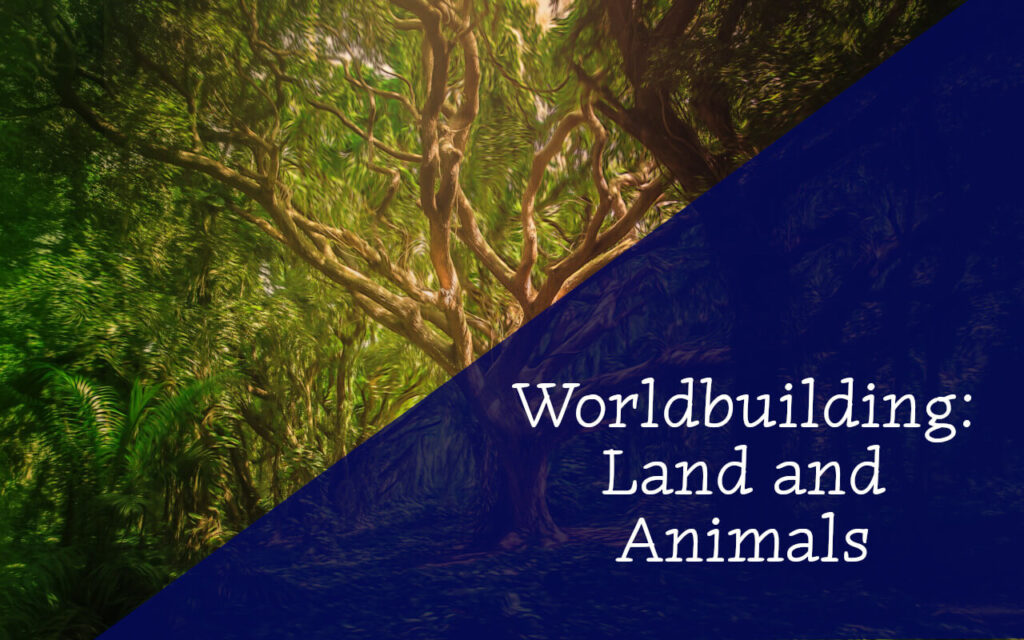One of the most basic aspects of worldbuilding deals with the land and animals. After all, every story has to be set somewhere and every physical place will have physical attributes.

When it comes to the land and animals of your world, a great place to start is to think of the world your characters are in and write down prominent features of the area. Are they in a desert, a forest, an ocean, a mountain, rolling hills, or in a city? Is it hot, cold, wet, dry? If you can pluck out those initial images that come to mind, you’ll have the first details from which your world can grow.
With those few ideas in mind, you can start to doodle some very rough maps. The map doesn’t have to be pretty: it’s not necessarily going to appear in the book (that is a different decision to be made at a much later time). Scribbling out a map can help solidify the world’s layout in your mind, which in turn will help you write consistent and logical descriptions. It will also help while planning your story because the layout of the land will impact where your characters can and can’t go.
Questions about Geography and Climate:
- How many moons and suns does your world have? How does this impact the weather?
- How much of the world is habitable?
- How much of the world is land and how much is water (or another substance)?
- What are some of the most prominent landscape features? Where are they located? And how do they impact travel?
- How has human activity affected the landscape?
Once you have an understanding of the landscape and weather patterns, you’ll be in a better position to figure out what sorts of animals inhabit that space. Obviously animals that inhabit a cool dry forest are going to be quite different from those in a mountain range. It’s fine if animals don’t play a huge role in your story, but it may be beneficial to jot down some of the more prominent animals your travelers are likely to see or eat.
Questions about Animals:
- What are the most common animals in your world?
- Where are these animals most likely to be found?
- Are there any animals in your story’s world that don’t exist in our own?
- If so, what are their basic living requirements? (What do they eat? Where do they live? How much space do they need?) Are they predators or prey?
- Are there any special relationships between animals and the inhabitants of your world?
While we’re on the topic of land and animals, let’s take a moment to consider the world’s plants. Plants have such a huge impact on everyday life we would be remiss to just skip over them. Plants provide food, medicine, shelter, and clothing to name but a few of their contributions. When building your world don’t forget to consider the role of plants.
Questions about Plants:
- What crops are farmers most likely to grow and harvest? What impact does their farming practice have on the environment or the world your building?
- What are the most common medicinal plants, and how accessible are they?
- How much does the average person know about which plants are useful (edible, medicinal, poisonous) and which aren’t?
- Are plants ever grown or kept for aesthetic purposes?
Making decisions about the land and animals in your world may seem pointless and over the top, but they have a huge impact on your story and characters. Knowing why certain weather patterns occur or why an animal is flourishing to the point of being a pest will help you discover how this affects your characters and plot.
A lot of worldbuilding is figuring out the cause of things so you can determine the effect it will have. Having at least a basic understanding of the geography, climate, plants, and animals can go a long way toward making your world realistic and your story plausible.
Are there any other questions about the land and animals that you think are important to consider in the early stages of worldbuilding? Let me know in the comments.

3 thoughts on “How to Go About Worldbuilding Land and Animals”